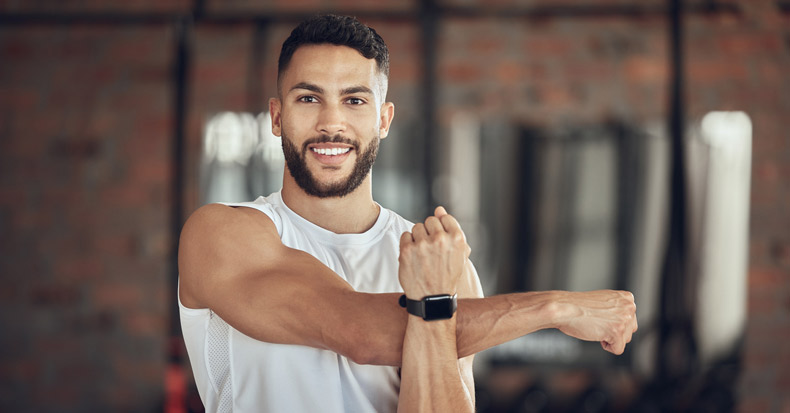The shoulder complex is comprised of four joints—glenohumeral, acromioclavicular, sternoclavicular, and scapulothoracic—that coordinate with one another so that we can perform numerous activities with our upper extremities. In addition to the aforementioned joints, there are several primary muscles that stabilize the shoulder and allow it to move in its three primary planes: front (anterior), back (posterior), and transverse (rotation functions). These muscles include the rotator cuff (which is actually four muscles), deltoid, bicep, teres major, latissimus dorsi, and pectoralis major muscles. As far back as 1944, researchers described the importance of coactivation forces of the shoulder’s dynamic stabilizing muscles to provide good joint stability.
To facilitate dynamic shoulder movements, mechanoreceptors in muscles, tendons, joint-capsule, ligaments, and the skin communicate back and forth with the brain. This creates the sense of proprioception, which is one of the primary ways we maintain balance, especially during movement. However, if proprioception deficits are present in the shoulder, then movements will be less precise and the risk for injury may increase.
The good news is that there are many ways to address joint position faults in the shoulder, one of which is strengthening the shoulder muscles. For example, studies involving athletes have shown that those in throwing sports, who would also have more developed shoulder muscles, have better proprioception in the upper extremities than athletes in non-throwing sports. In one experiment, researchers observed that asymptomatic adults who participated in an eight-week strength training program that included two sets of four exercises (bench press, lat pull down, shoulder press, and seated row) per session experienced improved proprioception, especially if they maintained a consistent intensity with each exercise. Those in a control group who did not lift weights did not experience such benefits.
Additional tools for improving shoulder proprioception include closed-chain exercises, stability ball exercises, resistance band exercises, unstable surface training, bodyweight isometric holds, medicine ball toss, and scapular control exercises. Performing exercises with the eyes closed to force a greater reliance on proprioception to maintain balance is also beneficial. Because muscle tension can negatively affect proprioception, loosening tight muscles with a foam roller or massage can improve their function. Additionally, any exercises that increase body awareness, like yoga or tai chi, can enhance proprioception.
If your work or leisure activities involve dynamic shoulder movements or you’re experiencing shoulder pain that limits participation in such functions, schedule an appointment with your doctor of chiropractic so they can assess the shoulder complex and provide in-office care and recommend exercises outside the office you can perform to help maintain good shoulder function.
